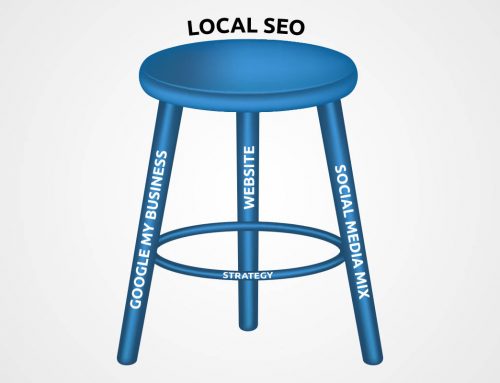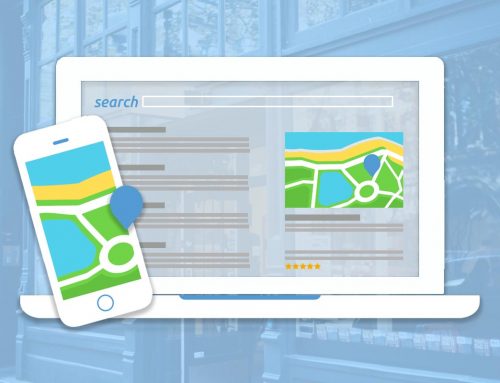Who’s it For?
As I was sitting across the desk from a client explaining “the plan” for getting content up on their website to create a better opportunity for success, he asked: “Who’s the content for? Google or our customers?”
It’s ironic that’s even a question, but the days of keyword spamming have created this mentality that there’s a difference between content for potential customers and some sacrificial offering of words required on the alters of the Google Gods… The real answer is: all content is and should be for the end user – the potential customer.
Now, will all this content be seen by the potential customers searching for your products or services? No. But some of it will. If the content is properly optimized (here’s where Google comes in to play), it will build authority and relevance for main pages on your site even if it receives only a short number of visits. This increases the likelihood that a person searching for services you provide will see one of your parent pages in a search result. These other content pages you publish as posts or articles and share on social media or publish as press releases can also be found as potential customers search online. There are really 4 levels of content complexity you should focus on as you publish content ranging from general information to specific information with a call-to-action.
General Content
 In order to establish yourself as an authority on a subject, it’s important to earn some trust. One great way of accomplishing that is to write articles or posts about generalities of your industry. (That’s what this blog is doing for my website.) Let’s compare to something really simple and say you provide accounting services. While you feel some of the elementary and basic information about accounting might be boring, there’s certainly a lot about taxes and bookkeeping most people don’t understand. A general article about accounting might explain the importance of keeping good financial records or informing readers of new tax laws.
In order to establish yourself as an authority on a subject, it’s important to earn some trust. One great way of accomplishing that is to write articles or posts about generalities of your industry. (That’s what this blog is doing for my website.) Let’s compare to something really simple and say you provide accounting services. While you feel some of the elementary and basic information about accounting might be boring, there’s certainly a lot about taxes and bookkeeping most people don’t understand. A general article about accounting might explain the importance of keeping good financial records or informing readers of new tax laws.
Educational Content
At the next level of content, you want to start explaining differences to the reader. Continuing with the example of accounting, this content will explore various types of services available for accounting: CPA, bookkeeper, accounts receivable/payable. Provide examples of situations where an individual or a business might benefit from using a professional and at which end of the spectrum in accounting that professional they need to hire should be licensed or trained. Write some content about various types of business entities for tax purposes and legal purposes and the benefits of each. Post articles about things people and businesses should be cautious and aware of when preparing their taxes. And, publish content helping them better understand a specific law you might find many of your clients are struggling with. Answering questions you feel your potential clients are seeking answers for is another great way to decide what to write about. For example, here are some search prompts that come up as I turned to Google:
Comparative Content
Now that you’ve posted the basics about your products or services and educated consumers how to determine which product or service best fits their needs, now you can publish content comparing options between your company and your competition. Here’s where one might write a blog post comparing the options of hiring a simple a bookkeeper, an accountant or a CPA… or just using TurboTax. In these comparisons, it will be difficult to remove bias, so don’t – but be fair and factual in your writing. At this level of content, you are trying to add value to what your company offers over alternatives. For the purposes of writing SEO friendly content, you’ll still be linking keywords to parent pages on your website as appropriate. Calls-To-Action can be used to take a reader straight to a conversion page or to the parent page about the services/products you offer. You might even give the reader both options at this point.
Value Added Content
This content is for the primary pages on your website, often found in your main menu – either top tier or in the drop down. The point and purpose of these pages are to convert visitors to call or complete a form or make a purchase. These are the pages you would hope most of the traffic is directed to from their search so you can lead them through a Call-to-Action to the sale. On this page, the information should be brief and, above all, must express the value provided through your services or products. It needs to be clear to those visiting these pages what the intended path is for them to follow. The explanation about the product or service and the value propositions, along with the Call-to-Action, should all fit on the page above the fold (before needing to scroll down). Should the visitor decide to scroll down, secondary and tertiary content can be present, but only in synopsis form with links to articles or pages that go into greater detail, should the visitor insist on “reading more.” In reality, though, you should prefer the visitor doesn’t read more. Having all the information possible – scrolling down and down and down… – can create more confusion about what it is they are actually hoping to get from your website and lead the visitor further from the sale. Saying less, but with more meaning will be more successful in gaining a conversion. An accountant would be more successful in acquiring a visitor as a new client if they were to actually have a conversation with an individual about options, rather than that person getting lost in the content on their website.
With the direction Google continues going with their algorithm updates, it would seem creating content for the consumer while using best practices in terms of online marketing/SEO is going to provide the best recipe for success in both coming up in search results and in becoming a trusted authority to those who come across your website. Ever since the Hummingbird update, Google has made huge improvements in contextual understanding as it reviews relevant websites in the milliseconds after a search query. This means the more you can write engaging content at every level of the subject matter, the greater your potential for Google and other search engines to take notice.






